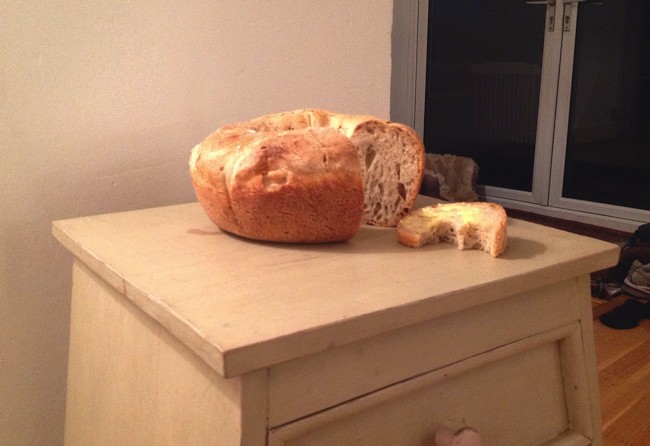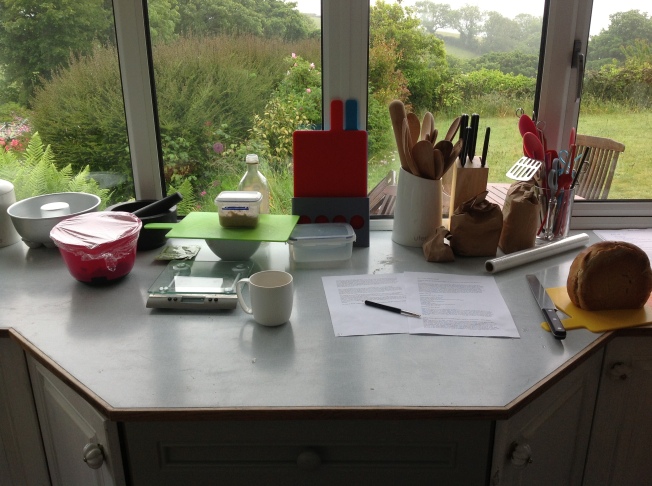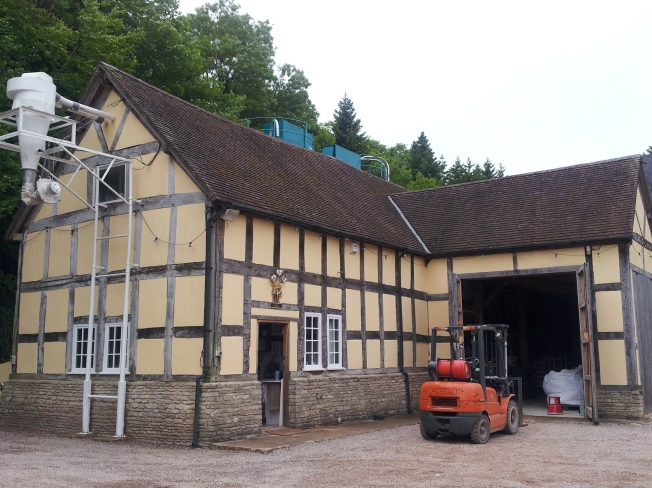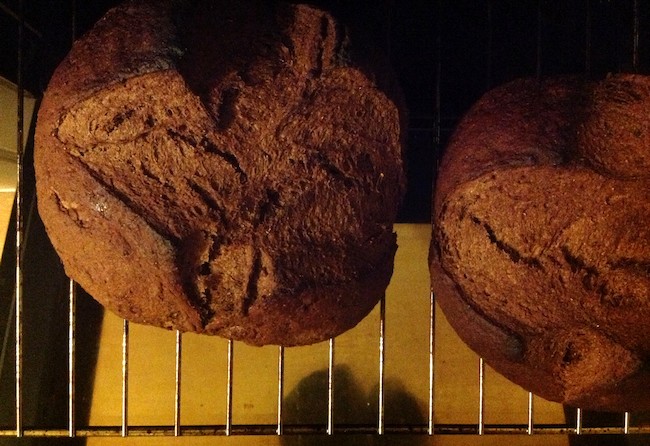I’ve only been back from holiday for a week, but already it feels forever away. No matter, I still remember how delicious this bread tastes: a lovely mild and flavourful sourdough.
The Auvergne crown looks like a bagel. A giant one.
The recipe comes from Daniel Leader’s book, Local Breads. Leader has visited artisan bakeries all around Europe and learned their traditional recipes. Discovering it gave me an odd feeling, a mixture of excitement (the perfect book!) and disappointment (he has baked the breads of Europe much more thoroughly than I will be able to).
I eventually ordered it with great excitement nearly three weeks ago, and now the time it’s taking to arrive from the US has reduced my feeling about it to… weary expectation. This recipe came via this blog instead.
Taste test: This produced much the most interesting sourdough flavour I have ever baked: a wonderfully satisfying, nutty, and slightly milky flavour. It went dry quite fast, as you would expect from a ring loaf.
Recipe notes: So, why did it taste so good? It could be that I used Shipton Mill’s French flour as opposed to my usual Sainsbury’s basic white strong (in disobedience to the recipe as you’ll see). Or it could have been the very soft water in Devon. The dough is quite wet.
It was very difficult to get out of the ring tin. I’d make it again as a boule.
Ingredients
for the levain
45g firm starter
95 plain flour
5g wholemeal flour
50g lukewarm water
for the dough
500g plain flour (I used French flour)
340ml water
125g of the levain (not the whole lot!)
10g salt
1. 12 hours beforehand, prepare the levain. Dissolve the 45g starter in the water, then add the flours and stir. The mixture will be stiff: knead it on a surface to incorporate the flour. Cover and leave at room temperature for 8-12 hours or until doubled in volume.
2. Combine 125g of the levain (save the rest) with the flour and the water. Leave it to rest for 20 mins.
3. Add the salt, and knead until smooth. This dough took a lot longer than normal to knead smooth for some reason.
4. Leave the dough to rise for 3-4 hrs or until doubled in size. Then, shape it into a crown large enough to fit your ring tin, with the ends overlapping by about 10cm.
5. Cover and leave to rise for 1-1.5 hrs or until it looks pillowy.
6. Pre-heat the oven to 220 C. Slash around the outer edge of the dough.
7. The recipe suggests you put the ring tin inside a pre-heated roasting tin with the lid on for 30 mins, then uncover, invert the ring tin to pop the loaf out and bake for another 15-20 mins.
I didn’t have a large enough roasting tin and there was no way on earth than loaf was popping out of the ring tin halfway through cooking. So I covered with foil for the first 30 mins and then uncovered it.
















